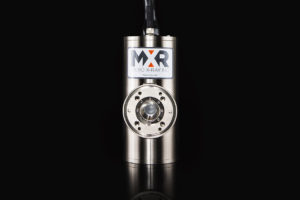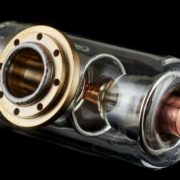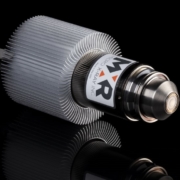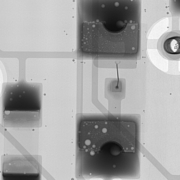X-ray Sources 101: X-ray Tube Grounding Considerations

X-ray Tube Grounding and Instability
When evaluating and using an X-ray tube, it is important to pay attention to the X-ray tube grounding topology. An improper ground path, a loose ground connection, or a mismanaged high voltage return line can result in tube instability that is tricky to diagnose. Recently, we have had a customers call us with an X-ray tube stability issue. They had recently received our X-ray tubes and installed them in their systems to begin testing. We then received notice that there was something wrong with the stability of the tube.
Our tubes are thoroughly tested before they leave our factory to ensure they are plug-and-play ready. Improper grounding is one of the leading causes of instability and can typically be characterized in one of two scenarios:
High Voltage Grounding Connection
Some customers choose to perform quick tests after receiving the unit as a form of incoming inspection. Even (or especially) when doing a ‘quick test’, care needs to be taken!
Using temporary grounding connections is a sure-fire way of causing instability, or worse, damage! Temporary grounding simply cannot manage the high voltage (HV) it needs to dissipate. Whenever voltages over 600V are being used, proper grounding is a necessity. That means adequate cable sizing (min 12 AWG or larger) with a suitably sized ring or spade connection. Never use an alligator clip to ground any HV circuit!
Earth Ground
This is a ground physically and electrically connected to Earth via a conductive material. Although it seems natural to ground to the nearest bolt or screw, care needs to be taken to make sure that whatever you are connecting to has a suitably low inductance path directly to Earth.
One of the most common causes of tube instability is caused by a floating ground. This occurs when not all grounds are suitably connected to the same earth ground. A floating ground can quickly cause the tube to become unstable and lead to arcing. A ground which seems suitable at a low kV setting may suddenly appear to be failing at higher kV settings. Once the ground path is compromised, arcing in the tube begins to deplete the vacuum, which causes the premature end of filament life.
Test and Verification
It is always a good idea to put a high quality ohmmeter across all ground connections to make sure there is a dead short between them. If these poor grounding conditions exist, then damage to the X-ray tube may occur.
At Micro X-Ray, we put a lot of emphasis on building high-quality and high-performing X-Ray tubes and integrated solutions. The last thing we want is a tube to be damaged from something as simple as an improper ground connection.
Contact us today with your questions about grounding, or to learn more about our X-ray tube options and why we should be your top choice.









